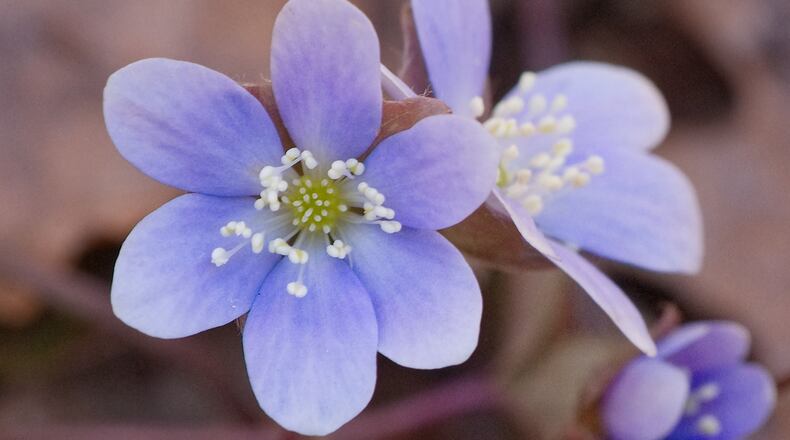“The 2020 wildflower season has officially begun,” declared my botany friend Don Hunter in Athens this week.
He had spied a ready-to-flower bud of a round-lobed hepatica in a wild patch of the plants at the State Botanical Garden in Athens. It was enough to make his heart leap for joy in anticipation of the coming native wildflower season. Other hepatica buds, he noted, “will not be far behind.“
Some hepaticas, in fact, should be sporting their delicate lavender blue or white (sometimes pink) blooms by this weekend. On a bright winter day, the blooms will seem to shimmer as sunlight streams down through the leafless trees and touches the forest floor.
For us wildflower lovers, such a sight warms the heart. Seeing the first wild blooms of the year — and in the dead of winter — is a highlight of our year.
In North Georgia, round-lobed hepatica (Hepatica americana), is regarded as the year's first blooming native wildflower, often flowering in early January. A small perennial with lobed, evergreen leaves, it grows in moist, deciduous forests in North Georgia and a few South Georgia counties. A coat of tiny hairs on its stem helps protect it from the cold; its evergreen leaves enable it to make food through photosynthesis in winter.
Some wildflower experts say that another delicate little native flower, the pinkish flowered trailing arbutus, rivals hepatica as the earliest wild bloomer. But most flower enthusiasts agree that hepatica is the earliest of the truly showy woodland wildflowers.
The early bloomers are only a prelude for the spectacle that’s coming in another month or so, when dozens of dazzling native wildflower species begin showing off their splendor and continue through May.
To see the unfolding display, take regular walks over the next few months along some of the scores of wildflower trails in Georgia’s state and local parks, wildlife management areas, national recreation areas, and so on.
IN THE SKY: From David Dundee, Tellus Science Museum astronomer: The moon next week will “shrink” from full to last quarter by Friday. Only two planets are visible now: Venus is low in the west just after dark and sets about two hours later. Mars is low in the east about two hours before dawn.
About the Author
Keep Reading
The Latest
Featured


